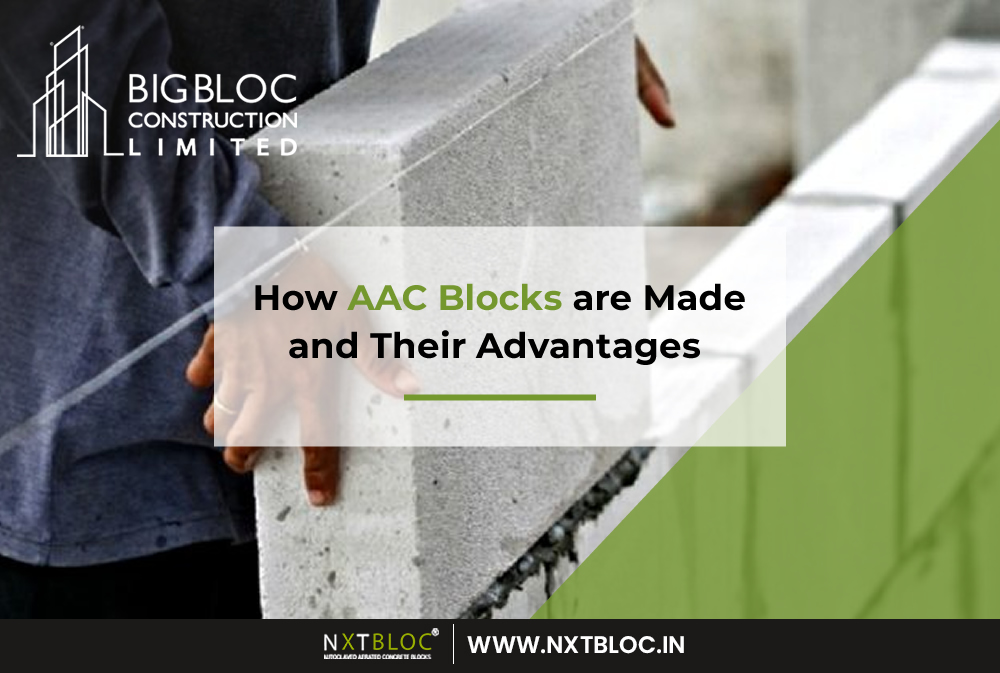Selecting the ideal materials is paramount in any construction job. In recent times, Autoclaved Aerated Concrete (AAC) blocks have gained much traction. They are not only friendly to the environment, but they also provide an array of advantages to construction projects.
In this article, we will explore how AAC blocks are made and their advantages.
How are AAC Blocks made?
AAC blocks are made from a mixture of sand, cement, lime, gypsum, water, and an aerating agent. The aerating agent is typically aluminium powder or paste, which reacts with the other ingredients to release hydrogen gas. This gas expands and forms bubbles within the mixture, resulting in a foam-like substance. The mixture is then poured into a mold and cured under steam pressure and temperature, resulting in hardened blocks.

Advantages of AAC Blocks for Construction
1. Low Density
AAC blocks are low-density, making them lightweight and easy to handle. This not only reduces the overall weight of the structure but also makes it easier to transport and install. Moreover, it reduces the load on the foundation, resulting in cost savings.
2. Self-Heat Insulation
AAC blocks have excellent thermal insulation properties, which means they can regulate the temperature inside the building. This results in lower energy consumption and cost savings on heating and cooling. Additionally, this insulation property helps to keep the interior comfortable and prevents the formation of condensation and mold.
3. Fire Resistance
AAC blocks are fire-resistant and can withstand high temperatures. They do not emit toxic fumes or smoke, making them a safer option in the event of a fire. In fact, some AAC blocks can withstand fire for up to 6 hours.
4. Flexibility
AAC blocks are versatile and can be easily cut, drilled, and shaped according to the design requirements. This makes them an excellent choice for architects and builders, as they can easily create unique designs.
5. Earthquake Resistant
AAC blocks have excellent seismic resistance, making them ideal for earthquake-prone areas. They have a high strength-to-weight ratio and can withstand lateral forces caused by earthquakes, thus reducing the risk of damage to the building.

6. Pest Resistance
AAC blocks are pest-resistant, as they do not provide a favourable environment for pests to thrive. This means fewer pest control treatments and lower costs in the long run.
7. Sustainability
AAC blocks are eco-friendly, as they are made from natural materials and do not emit harmful pollutants. They are also recyclable and can be crushed and reused in other construction projects. Moreover, their energy-saving properties help to reduce the carbon footprint of the building.
Conclusion
If you are looking for an effective and cost-efficient material for your renovation or new construction project, AAC blocks are the ideal solution. AAC blocks are easier to work with and can endure the test of time if installed correctly. Moreover, they are eco-friendly, as well as an affordable substitute for brick or concrete.
AAC blocks have revolutionized the construction industry by offering a sustainable, cost-effective, and safe alternative to traditional building materials. Their low density, self-heat insulation, fire resistance, flexibility, earthquake resistance, pest resistance, and sustainability make them excellent choices for construction. With their unique properties and benefits, AAC blocks are likely to become a popular choice for builders and architects in the years to come.
If you need an environmentally friendly construction material that is efficient and easy to work with, AAC blocks from Big Bloc Construction Ltd. are the ideal choice for your next project.
